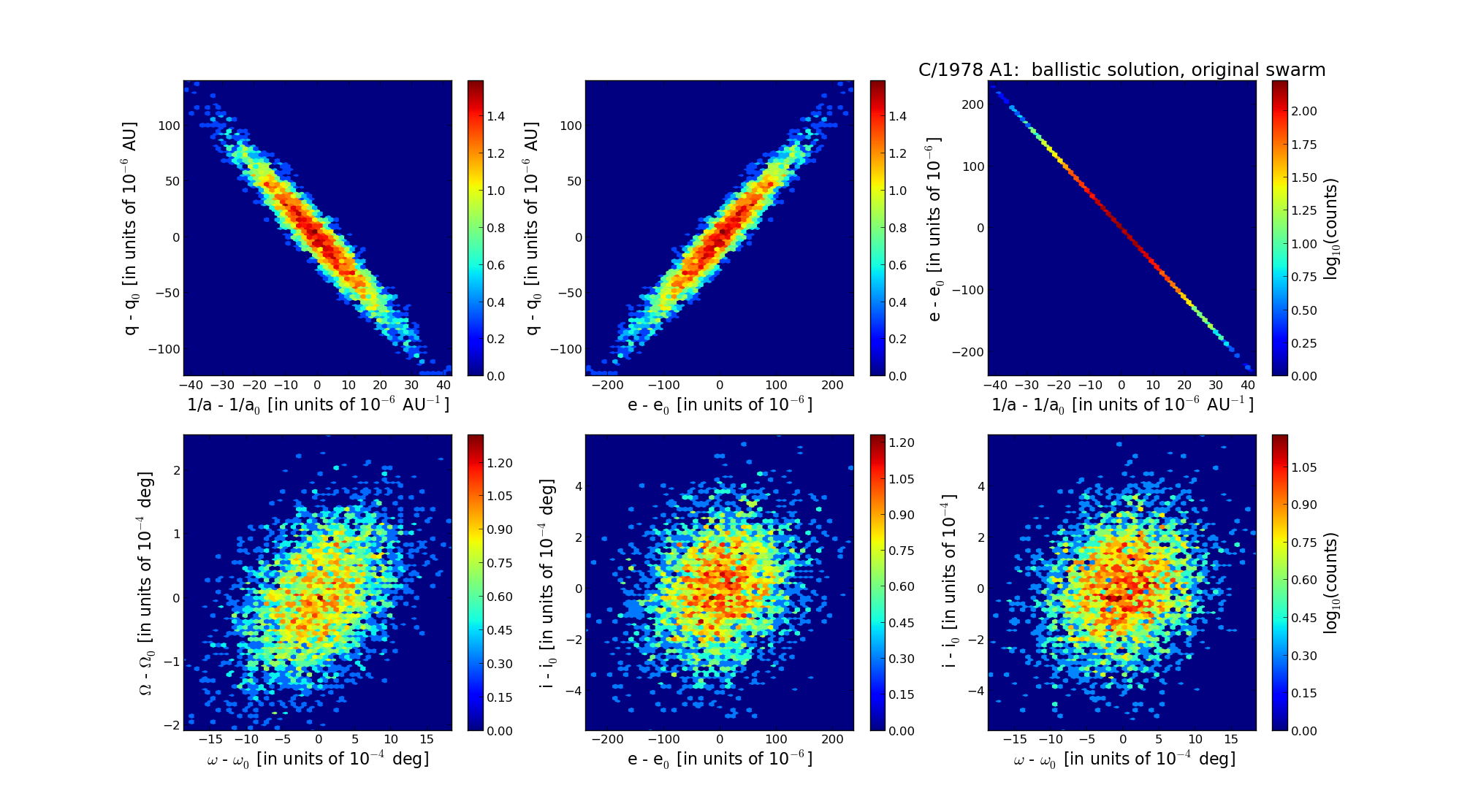| Solar System Dynamics & Planetology Group |
 |
C/1978 A1 West |  |
| Solar System Dynamics & Planetology Group |
 |
C/1978 A1 West |  |
| number of observations | 62 |
| number of residuals | 120 |
| data interval | 1976 Mar. 30 — 1979 June 26 |
| rms [arcsec] | 1.30 |
| orbit quality class | 1a |
| Epoch (TT) | 19770805.0 | = JD 2443360.5 |
| time of perihelion passage (TT) | 19770721.555156 | ± 0.006685 |
| perihelion distance | 5.60632765 | ± 0.00003869 |
| eccentricity | 1.00294290 | ± 0.00006749 |
| argument of perihelion [deg] | 343.283932 | ± 0.000542 |
| longitude of the ascending node [deg] | 211.623628 | ± 0.000070 |
| inclination [deg] | 116.930129 | ± 0.000162 |
| inverse semimajor axis [10-6 au-1] | -524.92 | ± 12.03 |

| Epoch (TT) | 16701212 | |
| time of perihelion passage (TT) | 19770722.686250 | ± 0.006476 |
| perihelion distance | 5.60844086 | ± 0.00003815 |
| eccentricity | 0.99978957 | ± 0.00006666 |
| argument of perihelion [deg] | 343.384843 | ± 0.000535 |
| longitude of the ascending node [deg] | 211.662760 | ± 0.000069 |
| inclination [deg] | 116.926807 | ± 0.000160 |
| inverse semimajor axis [10-6 au-1] | 37.52 | ± 11.89 |
| Epoch (TT) | 22820806 | |
| time of perihelion passage (TT) | 19770722.474789 | ± 0.006619 |
| perihelion distance | 5.60423856 | ± 0.00003826 |
| eccentricity | 1.00054560 | ± 0.00006660 |
| argument of perihelion [deg] | 343.329066 | ± 0.000535 |
| longitude of the ascending node [deg] | 211.703824 | ± 0.000068 |
| inclination [deg] | 116.917447 | ± 0.000161 |
| inverse semimajor axis [10-6 au-1] | -97.35 | ± 11.88 |